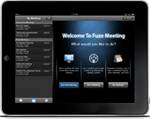I have done dozens of webinars over the past several years and have learned from the school of hard knocks as well as the best professional speaking experts what to do and what not to do. After seeing a press release from SAP talking about their experiences I thought it might be useful to share some of these with you as well. We last wrote on how to make better webinars last summer.

- Timing is important for live events. Most people avoid conducting webinars on Mondays or Fridays, because your audience isn’t as engaged as the middle of the week. Also, if you are going for an American audience, try to do it in the middle of the day, say between 11am and 3p ET, so you can cover most of the time zones. While most webinars that I have been a part of are scheduled for an hour, try to make them shorter because of reduced attention spans.
- Advance work is critical. SAP suggests that you start at least 12 weeks out before the actual event: that is probably excessive, but still you want to do some advance work in terms of promoting the event, booking your speakers, and making sure your content is ready. And make sure you start your meetings on time, too! No one wants to wait around while you fiddle with the controls or because a speaker is late. This means testing the visual and especially audio quality ahead of the actual event to ensure that you know how to operate all the various controls. The cheaper products tend to fall down when it comes to audio quality, but this is critical to keeping your audience engaged.
- Yes, I said speakers, as in more than one. I find a world of difference between solo and even having a single guest on my webinars. You want to vary the tone and perspective and create a conversational tone between the two (or even three) of you. No one wants to hear a monologue, unless you are a late-night TV host.
- Flog your internal customer lists and get the word out. Part of the advance work is promoting your event with as many different tools as you can: email, social media, links on your blogs, and so forth. Post the recorded play-back on your site and link to the slide deck on Slideshare.net. (Or if your provider doesn’t have a mechanism to do this, take a look at the tool from Artic Fox we covered last fall.) Make use of a custom registration page to capture the leads and follow up with emails afterwards with these links.
- Nix those bullet-point slides. In any event, don’t produce slides that are just text and certainly don’t read those bullet points. You want something more engaging. Use the camera controls if you have access to these to move around in your office studio, or vary between showing the speakers and your PC screens. It is okay to have one or two (such as an agenda slide at the beginning) but don’t roll out lots of text.
- Make your presentation engaging. Leave places in your presentation to solicit questions from your audience. If your webinar service provider has a polling feature, put up a couple of polls during the presentation and ask your audience for their perspective. Take questions from social media too if you can.
Good luck with your webinar, and feel free to share your own best practices here too.










